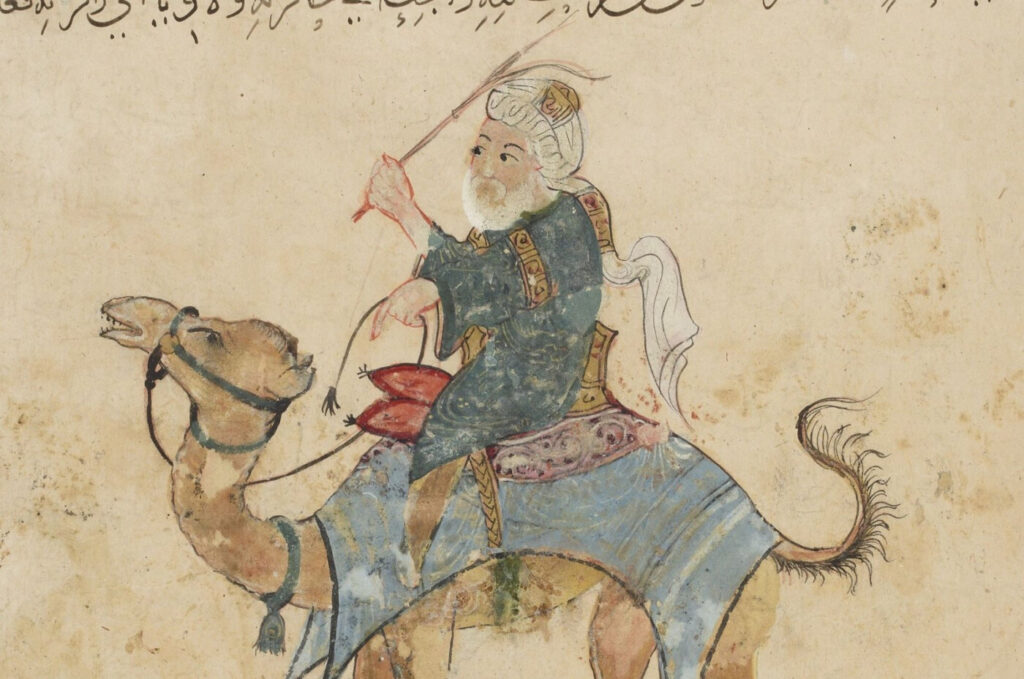
In this article, we will talk about one of the greatest Arab travelers of the 12th century, who can easily be called the “Arab Christopher Columbus.”
One of the world’s greatest travelers, Ibn Battuta, was born in 1304 in Morocco in the city of Tangier. Limited information is available about his childhood and how he spent those years.
His full name is Shams ad-Din Abu Abdallah Muhammad ibn Abdallah al-Lawati at-Tanji. When Battuta was still a child, he studied at a madrasah, where he learned law and theology. Even in his youth, Battuta decided to pilgrimage to shrines in other countries.
Ibn Battuta made his first journey when he was 22 years old, and then he could not even think that his travels would take more than a dozen years.
Battuta crossed the border of North Africa and passed through the Near and Middle East, Yemen, East Africa, the Arabian Peninsula, the Caucasus, Astrakhan, Constantinople, and Central Asia. In addition, he visited Afghanistan, through which he came to India, where he lived for several years.

Subsequently, he visited Ceylon, the Maldives, Indonesia, and China, and then returned back to Morocco. However, after a short period of time, Ibn Battuta went on his travels again, visiting West and Central Africa, and the Iberian Gulf.
READ: Official State Language in the United Arab Emirates: Features of Dialects
Throughout his life, the traveler Ibn Battuta journeyed approximately 120,700 kilometers, a remarkable feat during his time. In 1354, Ibn Battuta returned to Fez.
Ibn Battuta set out to wander in 1325 on June 14, and the starting point was his hometown, where he was born and raised – Tangier. The main purpose of his trip was to make a pilgrimage to the holy Muslim city of Mecca and also to visit the tomb of the Prophet Muhammad in Medina. His road was very long and passed through the northern coast of Africa.

The travelers passed through the countries of Asia Minor: Syria and Palestine, visited many ancient cities, and saw historical monuments, which Ibn Battuta wrote about in his book.
In his writings, Ibn Battuta praised Damascus as being more beautiful than other cities, particularly highlighting the elaborate decorations of the Umayyad Mosque, which included gold, precious stones, marble slabs, and multi-colored mosaics.
During the course of his journey, Ibn Battuta was married three times. According to the rules, in the Muslim religion, believers are allowed to have no more than four wives and an unlimited number of concubines and slaves. As historical facts say, in 1326, a caravan of pilgrims reached their goal: they arrived in Mecca, the place of the founder of Islam, the Prophet Muhammad. Carrying out the Hajj to a given city is one of the most important tasks for every Muslim. As planned, Ibn Battuta also visited Medina, where the Prophet Muhammad was buried.
READ: Holidays on Saadiyat Island: Clean Beaches and Excellent Service Close to Abu Dhabi
Having visited Mecca and Medina, the traveler went to Basra, Baghdad, and Mosul. Subsequently, his road passed through the northeast, to cities such as Iran – Shiraz, Isfahan, Mashhad. In addition, in those days, these cities amazed everyone with their beauty. Every traveler who visited them brought famous Persian goods from there: silk fabrics, precious stones, gold, and silver jewelry.
Ibn Battuta lived in Mecca for two years before embarking on a sea voyage. Arriving in Jeddah, he boarded a ship and sailed across the Red Sea to Suakin, a Sudanese port.
Subsequently, Ibn Battuta traveled through the shores of East Africa all the way to the Mazambi Strait, visited cities and became acquainted with the customs and traditions of African tribes. After which he visited Yemen.
Ibn Battuta wrote that the people of Yemen are distinguished by their excellent mood, beautiful appearance, and gentle character, but as for women, Ibn Battuta mentioned that in Yemen they were of extraordinary beauty.
After Ibn Battuta, he traveled through the coasts of all ports. The largest port he visited was Hormuz. As the Arabs used to say, “The earth is a ring, Hormuz is the pearl in it.” Moreover, at this port, traders from various parts of the world would gather.
READ: National Clothing of the UAE: Features of the Arabs
Subsequently, the traveler went to Bahrain, which was famous for its pearls. Ibn Battuta described the process of obtaining pearls by pearl divers. He explained that before each dive, the divers put on a mask made of turtle shells, which they also use to make pincers to clamp their nostrils. They tie a cord around the mask and dive into the water.
To be continued…